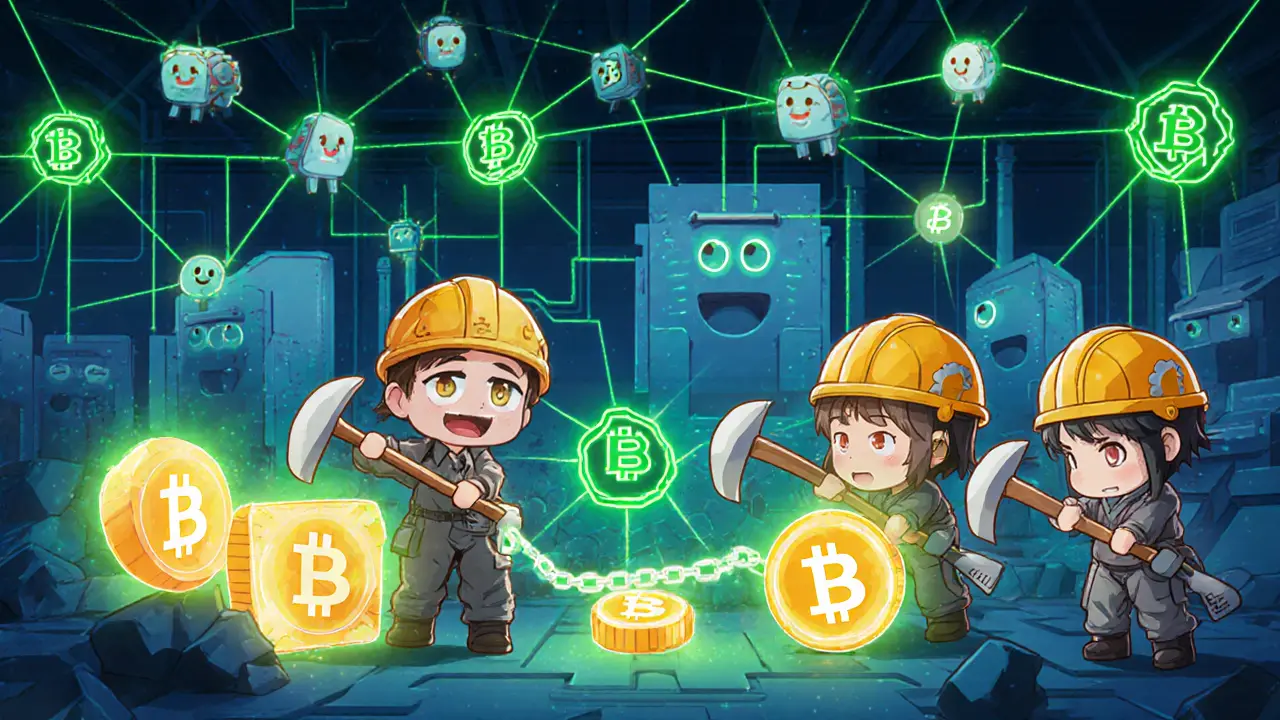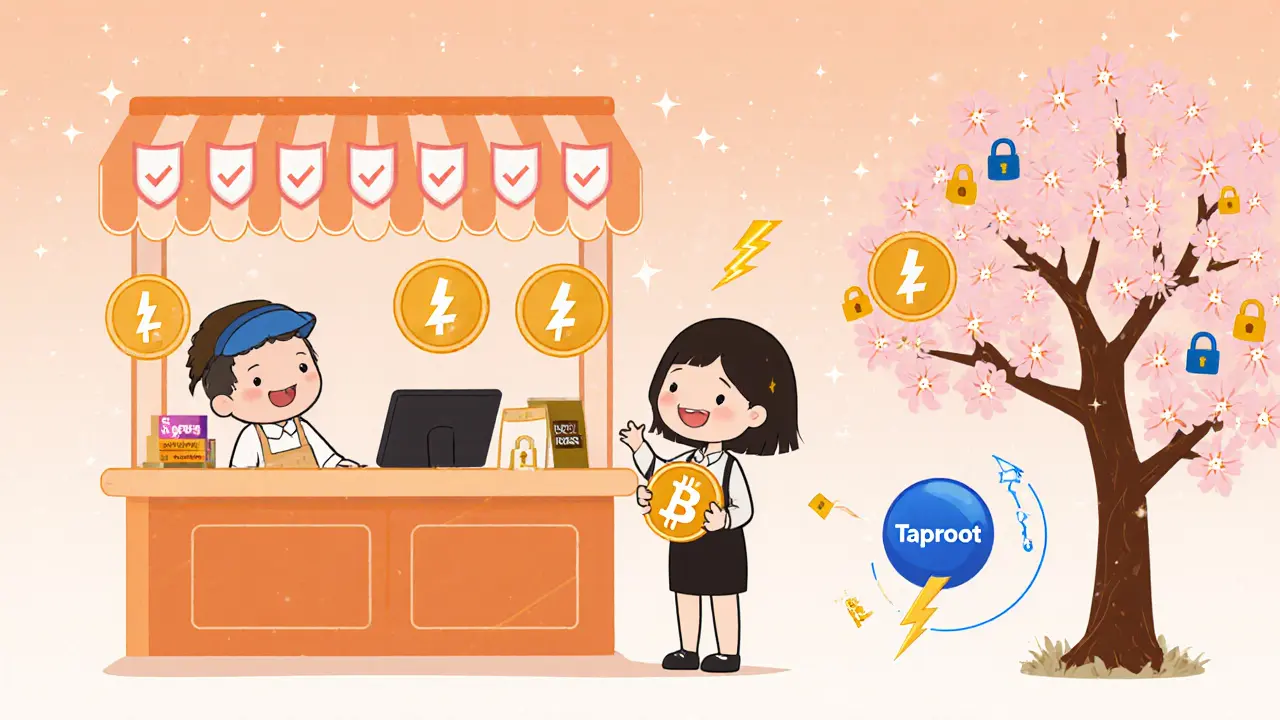Bitcoin Double-Spending Risk Calculator
Risk Assessment
Enter transaction details and click "Calculate" to see the risk assessment.
How It Works
This calculator estimates the probability of a successful double-spending attack based on:
- Transaction Value: Higher-value transactions are more attractive targets for attackers.
- Confirmations: More confirmations exponentially reduce the risk of reversal.
- Network Security: Bitcoin's massive hash rate makes large-scale attacks economically prohibitive.
Note: This is a simplified estimation. Actual risk depends on many factors including network conditions and attacker resources.
Ever tried to copy a file and wondered why you can’t use the same copy twice? Digital money faces the same dilemma-someone could try to spend the same coin in two places at once. That’s the dreaded double‑spending problem, and it’s the reason most early digital currencies never took off. Bitcoin’s breakthrough was turning this theoretical flaw into a practical, trust‑free system. Below is a plain‑English walk‑through of exactly how Bitcoin pulls it off.
Quick Summary
- Double‑spending means the same digital token is used in more than one transaction.
- Bitcoin prevents it with a public, immutable ledger called the blockchain.
- Proof‑of‑Work mining creates economic cost that makes fraud prohibitively expensive.
- Six block confirmations give merchants near‑certain finality for most payments.
- Even a 51% attack would cost more than any potential gain from double‑spending.
What Double‑Spending Looks Like
Imagine Alice has 1BTC. She sends it to Bob and, before the network confirms the transaction, she also sends the same 1BTC to Charlie. If the system can’t tell which payment happened first, both Bob and Charlie might think they own the coin. Traditional banking avoids this by letting a central authority keep the master record. Bitcoin, however, has no ‘bank’ to call.
Core Building Blocks That Stop the Cheat
Three technical pillars work together to block double‑spending:
- Blockchain is a publicly shared ledger where every confirmed transaction is recorded in a block that links to the previous block via a cryptographic hash.
- Proof of Work (PoW) forces miners to solve a difficult math puzzle before a block can be added.
- Network consensus: thousands of independent nodes verify each new block before accepting it.
How a Transaction Flows
When Alice clicks “Send 1BTC to Bob”, the software creates a transaction that references a specific previous output (the coin she owns). This reference is like a serial number that can only be spent once.
- Broadcast: The transaction is sent to the mempool where nodes temporarily store pending transactions.
- Verification: Each node checks that the input hasn’t already been spent in a confirmed block.
- Inclusion: A miner picks the transaction, packs it into a new block, and runs PoW.
- Confirmation: Once the block is solved, the network broadcasts the new block. Every node adds it to their copy of the blockchain, giving the transaction its first confirmation.
Every additional block that follows adds another confirmation. Most merchants consider six confirmations (about an hour) “final” because reversing the transaction would require re‑mining six blocks faster than the rest of the network.
Why PoW Makes Double‑Spending Expensive
To cheat, Alice would need to create an alternative block that spends the same input to Charlie, then convince the network that her fork is the true chain. This means she must control more than 50% of the total hashing power-known as a 51% attack. As of 2024 the Bitcoin network’s hash rate tops 400EH/s, translating to billions of dollars in specialized hardware and electricity. The cost dwarfs any profit from double‑spending a few coins.

Confirmation Depth: The Real‑World Guardrail
During the brief period a transaction sits in the mempool, it’s technically vulnerable. Some merchants mitigate this risk by:
- Waiting for at least one confirmation for low‑value sales.
- Requiring three to six confirmations for larger purchases.
- Using Replace‑by‑Fee (RBF) policies to ensure higher‑fee transactions replace lower‑fee ones, reducing the chance of a double‑spend attempt.
Each new block exponentially increases the computational effort needed to rewrite history, making successful fraud virtually impossible after six confirmations.
Economic Incentives Keep Miners Honest
Miners earn block rewards and transaction fees only for blocks that the honest network accepts. If a miner attempts a double‑spend, they gamble huge electricity costs with no guarantee of winning the fork. The built‑in incentive structure thus aligns miner profit with network security.
Comparison with Traditional Systems
| Aspect | Bitcoin | Banking / Credit Cards | Other Crypto (e.g., Ripple) |
|---|---|---|---|
| Record Keeper | Decentralized blockchain | Central ledger managed by bank | Varies - often semi‑centralized |
| Consensus Mechanism | Proof of Work | Trusted third‑party verification | Proof of Stake, consensus nodes |
| Economic Cost of Attack | Hundreds of millions in hardware & electricity | Legal penalties, fraud detection systems | Depends on stake size or validator count |
| Finality Speed | ~10min per block, 6 confirmations ≈ 1hr | Instant, but reversible | Seconds‑to‑minutes, often reversible |
| Transparency | Public ledger, anyone can audit | Closed, proprietary | Often public but less mature tooling |
Real‑World Case Study: Merchant Adoption
Online retailers that accept Bitcoin typically wait for three confirmations for orders under $100 and six for anything larger. A 2023 study of 12k Bitcoin transactions showed that the probability of a successful double‑spend after six confirmations was less than 0.0001%-essentially zero.
Future Hardening Measures
Developers keep improving the network’s resilience:
- Taproot (2021): Improves privacy, making it harder to spot double‑spend attempts.
- Lightning Network: Off‑chain channels settle instantly, with on‑chain settlement only if a dispute arises, providing another layer of security.
- Enhanced mempool policies: Nodes now better prioritize high‑fee, low‑risk transactions, reducing the window for double‑spend attacks.
All these upgrades build on the same core idea-make it cheaper to play by the rules than to break them.
Key Takeaways
- Double‑spending is solved by combining a transparent ledger, costly PoW mining, and global consensus.
- Six confirmations give practical finality for most transactions.
- The economic barrier (hash rate) keeps attacks financially unviable.
- Bitcoin’s model removes the need for trusted third parties, offering true peer‑to‑peer value transfer.

Frequently Asked Questions
Can a double‑spend happen before a transaction is confirmed?
Yes. While a transaction sits in the mempool, a malicious actor could broadcast a conflicting transaction with a higher fee. Nodes will generally accept the higher‑fee version, causing the original to be dropped. That’s why merchants wait for at least one confirmation.
What is a 51% attack and why is it unlikely?
A 51% attack means an entity controls the majority of the network’s hashing power and can out‑mine honest miners, rewriting recent blocks. With a global hash rate above 400EH/s, acquiring that power would cost billions of dollars in ASIC hardware and electricity-far more than any profit from double‑spending.
Why do merchants prefer six confirmations?
Each new block adds a layer of security. After six blocks (roughly one hour), the computational effort required to reverse the transaction becomes astronomically high, making successful double‑spending practically impossible.
How does Replace‑by‑Fee affect double‑spending risk?
RBF lets a sender increase the fee of an unconfirmed transaction, causing nodes to replace the old version. This prevents a low‑fee transaction from being stuck while a malicious actor tries to double‑spend with a higher fee. Merchants can require RBF‑disabled transactions for higher‑value sales.
Is Bitcoin’s double‑spending protection the same for all cryptocurrencies?
Not always. Some newer coins use Proof of Stake or delegated models that have different security assumptions. Bitcoin’s PoW and massive hash rate make its protection uniquely robust.




Fiona Padrutt
August 21, 2025 AT 12:42Bitcoin’s anti‑double‑spend design is exactly why the U.S. should double down on crypto-friendly policies; the proof‑of‑work chain guarantees that no rogue actor can stealthily swipe funds, and that security model is a direct challenge to any foreign regime trying to control our financial sovereignty.
Briana Holtsnider
August 22, 2025 AT 10:55The so‑called “clear guide” is a shallow rehash of textbook fluff; it glosses over the real‑world nuances and leaves beginners with a false sense of invincibility, making them think the network is impenetrable when it’s merely a statistical hurdle.
Corrie Moxon
August 23, 2025 AT 09:08Exactly, the step‑by‑step breakdown makes it easy to see how each confirmation adds a layer of protection, and that clarity helps newcomers trust the system without getting overwhelmed by cryptographic jargon.
Jeff Carson
August 24, 2025 AT 07:22Nice one! 😎 The way you highlighted the mempool’s role and the exponential drop‑off after each block really shows why merchants can sleep easy after a few confirmations. 🚀
Anne Zaya
August 25, 2025 AT 05:35Cool article, man. 6 confirmations feels like a solid checkpoint, but for small coffee purchases I’d just roll with one or two and call it good.
Emma Szabo
August 26, 2025 AT 03:48Bitcoin’s double‑spending defense reads like a masterpiece of economic engineering, where every piece fits together like gears in a clock. First, the blockchain acts as an immutable public ledger, a transparent record that anyone can audit, which eliminates hidden back‑doors. Then, proof‑of‑work forces miners to invest massive capital in hardware and electricity, turning attacks into a financial nightmare. Each new block links back to the previous one through a cryptographic hash, creating an unbreakable chain that would require rewriting history to cheat. When a transaction is broadcast, it lands in the mempool, awaiting a miner’s pick‑up, and every node checks that the inputs haven’t already been spent, acting as vigilant gatekeepers. Once a miner includes the transaction in a block and solves the puzzle, the network validates the block and adds it to the ledger, granting the first confirmation. Subsequent blocks build on that foundation, and with each additional confirmation the cost to reverse the transaction grows exponentially, like trying to pull a rope that’s being stretched tighter and tighter. By the time six confirmations roll around, the computational effort required to fork the chain is astronomically high, making a successful double‑spend practically impossible. The economic barrier isn’t just about raw hash power; it also includes the opportunity cost of diverting those resources from legitimate mining rewards. Moreover, miners have built‑in incentives to play by the rules, because any deviation threatens their future earnings from block rewards and transaction fees. The network’s decentralized nature means there’s no single point of failure, so an attacker would need to control a majority of the global hash rate, which currently sits in the hundreds of exa‑hashes per second. That level of concentration would demand billions of dollars in ASICs and electricity, a price tag that dwarfs the value of most double‑spend attempts. Even sophisticated actors, like nation‑states, find the cost‑benefit analysis unfavorable when the target is a few hundred dollars. In practice, this translates to merchants feeling confident after three confirmations for modest sales and six for larger purchases. The design also gracefully accommodates upgrades, such as Taproot and the Lightning Network, which further harden the system without breaking its core security guarantees. All in all, Bitcoin’s solution to double‑spending is a brilliant blend of cryptography, economics, and game theory that keeps the ledger honest.
Fiona Lam
August 27, 2025 AT 02:02Yo, this guide nails why you shouldn’t try any funny business with Bitcoin – the network will smack you down faster than a punch‑drunk boxer, so keep your hands off the chain unless you’re ready to burn cash.
OLAOLUWAPO SANDA
August 28, 2025 AT 00:15People think six blocks is magic, but you can still get ripped if you’re fast enough, so don’t trust the hype.
Alex Yepes
August 28, 2025 AT 22:28While the exposition proficiently outlines the probabilistic decay of double‑spending risk, it would benefit from a more rigorous statistical model that incorporates real‑time network latency and fee‑market dynamics; such an augmentation could refine merchants’ confirmation policies, aligning them more closely with empirically observed attack vectors.
Sumedha Nag
August 29, 2025 AT 20:42Honestly, all that “proof‑of‑work” talk is just a fancy way to say “pay for electricity,” so the whole security claim feels a bit overstated.
Holly Harrar
August 30, 2025 AT 18:55Great breakdown! i love how u explained the mempool and RBF – super helpful for newbies like me.
Vijay Kumar
August 31, 2025 AT 17:08Totally agree, the step‑by‑step flow makes it less scary, and adding a quick tip about checking the transaction ID on a block explorer can give even more confidence.
Edgardo Rodriguez
September 1, 2025 AT 15:22In contemplating the elegance of Bitcoin’s consensus, one cannot help but marvel at the interplay of cryptographic rigor, economic incentives, and collective trust; each block, a testament to decentralized coordination, stands as a monument to human ingenuity, a digital cathedral constructed not of stone, but of hash power and algorithmic proof.
mudassir khan
September 2, 2025 AT 13:35Despite the author’s attempts at clarity, the piece remains a superficial veneer, neglecting to address the underlying volatility of mining incentives and the inevitable centralization pressures that threaten the very premise of a trust‑free network.
Bianca Giagante
September 3, 2025 AT 11:48Indeed, the nuanced explanation of replace‑by‑fee and confirmation depth underscores the practical measures merchants can adopt, thereby bridging the gap between theoretical security and everyday commerce.
Andrew Else
September 4, 2025 AT 10:02Sure, whatever.
Susan Brindle Kerr
September 5, 2025 AT 08:15One must question the very soul of a system that demands patience for hours, as if the very act of waiting becomes a rite of passage for the faithful, a test of devotion to a digital deity that promises salvation through relentless block confirmations.